As we transition from our old decor style (vintage farmhouse) to our new style (mid century modern eclectic), I am slowly replacing things around our home. In particular, I needed to replace the key bowl that my husband has relied upon for years as a safe haven for his keys and wallet.
He’s been using a very charming mini crate that once held hatchets, of all things! You may recall seeing it as a photo prop in this hat stand project that I made.
And while it IS indeed adorable, truthfully, it’s not ideal. The opening is narrow and the sides are not smooth, full of splinters-to-be. He’s effectively played the game “Operation” while retrieving his wallet for many, many years now.
So, when I spotted this wooden bowl at a thrift recently, I decided that the time had come to swap it out!
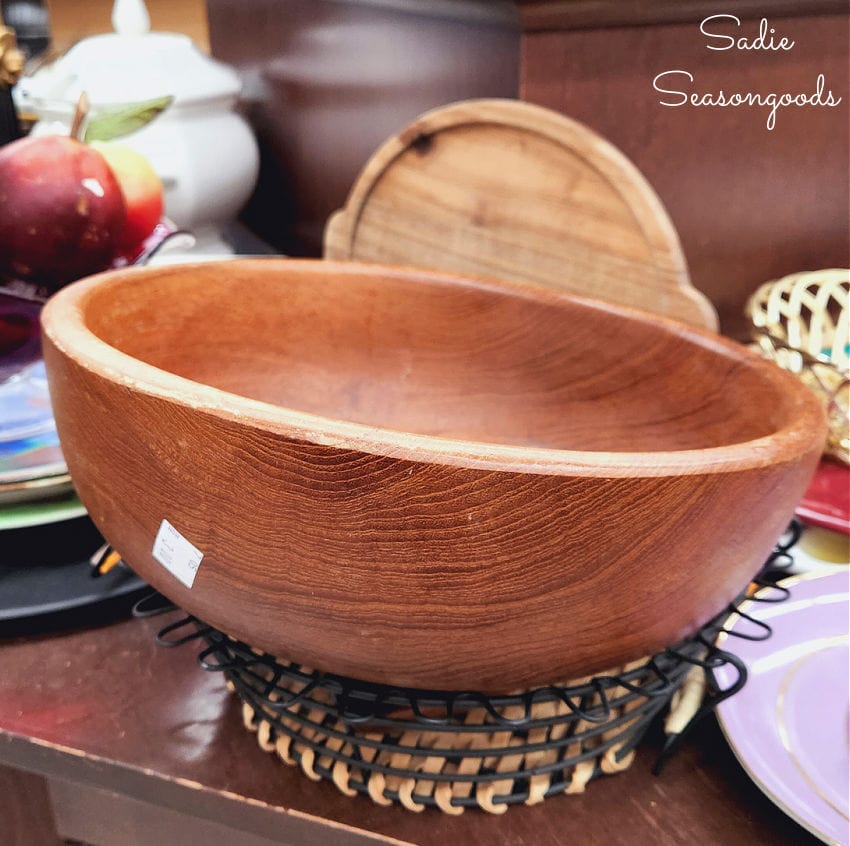
Sure, it was scratched up and in need of some TLC. But it was made from a single piece of turned wood, had a GORGEOUS grain, and was wide open and smooth.
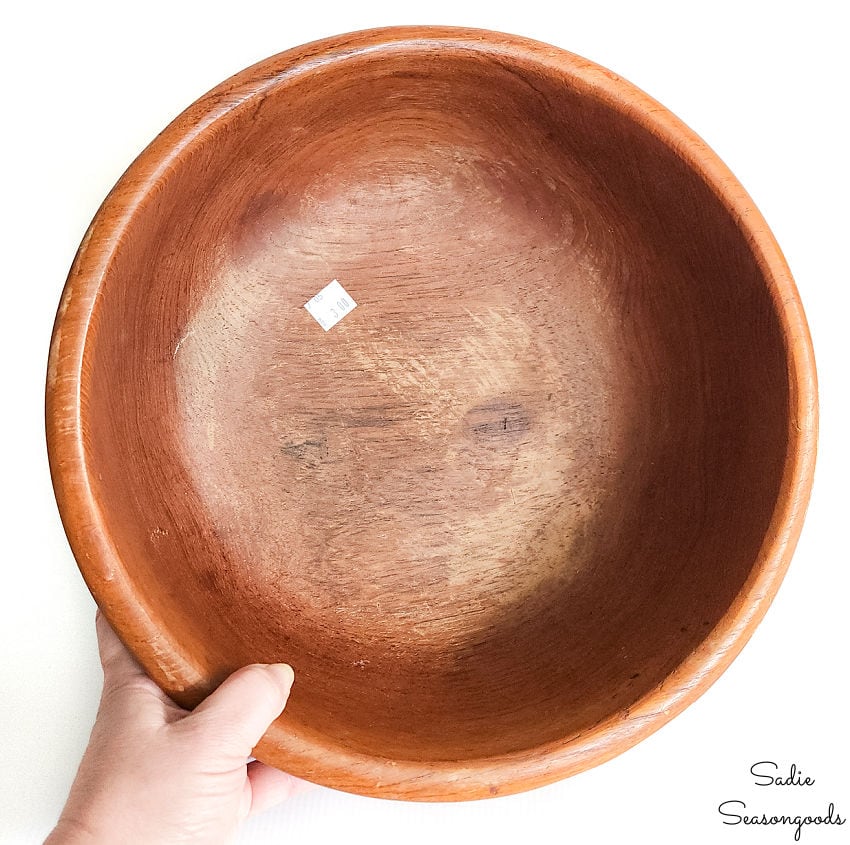
In other words, simply perfect for using as a key bowl in our entryway! And I knew exactly how I wanted to restore it.
This post contains affiliate links for your crafting convenience. As an Amazon Affiliate, I earn from qualifying purchases. All blue, bold, and underlined text is a clickable link, either to a product or to a related post.
Key Bowl Restoration: The Experiment
My plan was pretty simple: restore the scratched-up wood (using this furniture salve) and add a touch of gold stenciling. By the way, the stencil I’m using is no longer available, but it looks like you can find similar versions on Etsy.
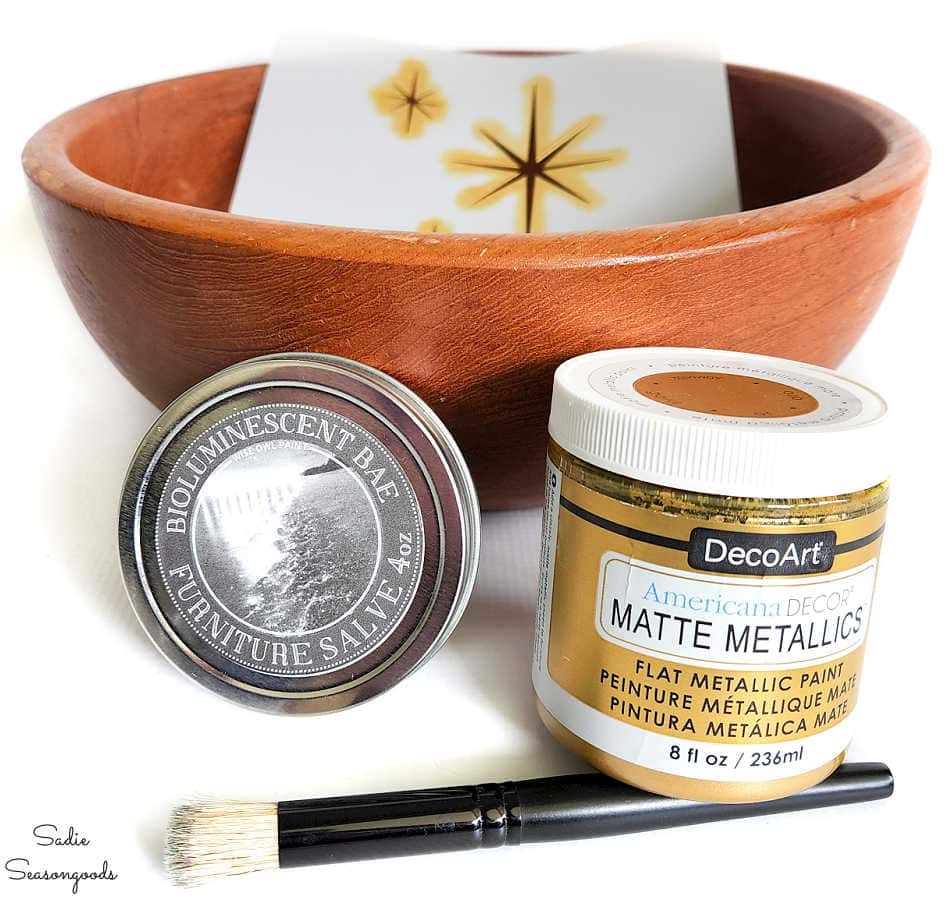
But, I had a chicken vs. egg situation: Should I restore first, stencil second? Or stencil first, restore second?
Since I was honestly not sure which should come first, I decided that my $3.99 bowl could serve as an experiment. First, I applied a touch of furniture salve to one half of the bowl’s flat bottom.
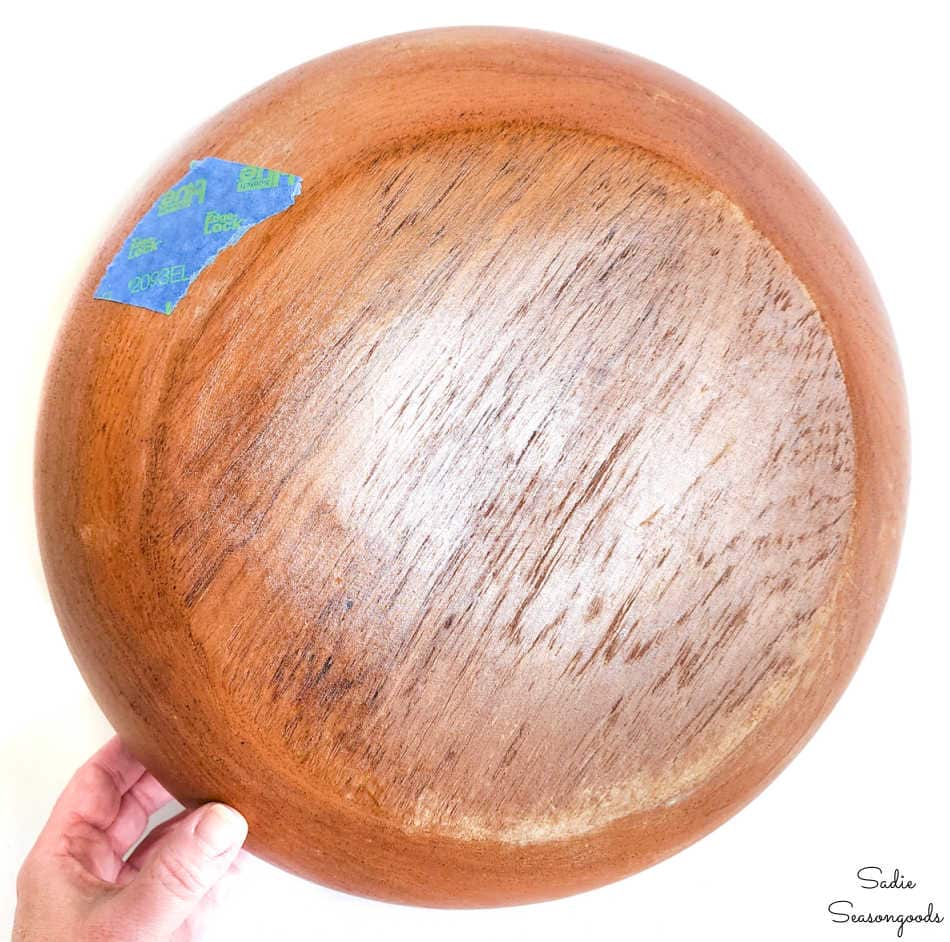
The blue painter’s tape denotes which side was salved. You can easily see where the scuffing around the bottom edge starts and stops!
Then, I centered one of my mid-century modern stencils on the bottom (remember me using it on this project first?).
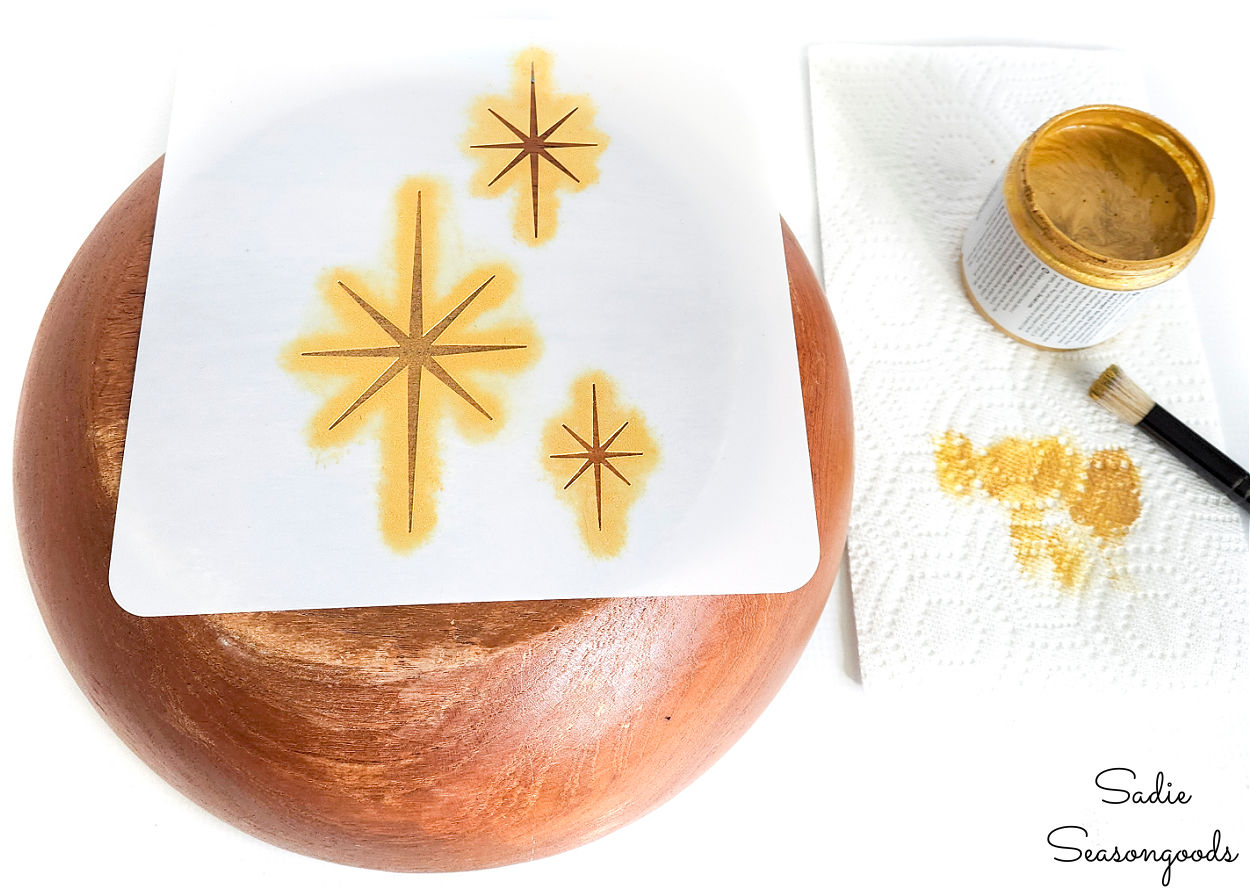
I situated the stencil so that half of the atomic star design fell over the conditioned half, and the rest was on the non-conditioned half.
Next, I stippled on some matte gold paint and removed the stencil. Now for the test- would there be a noticeable difference in the stenciling??
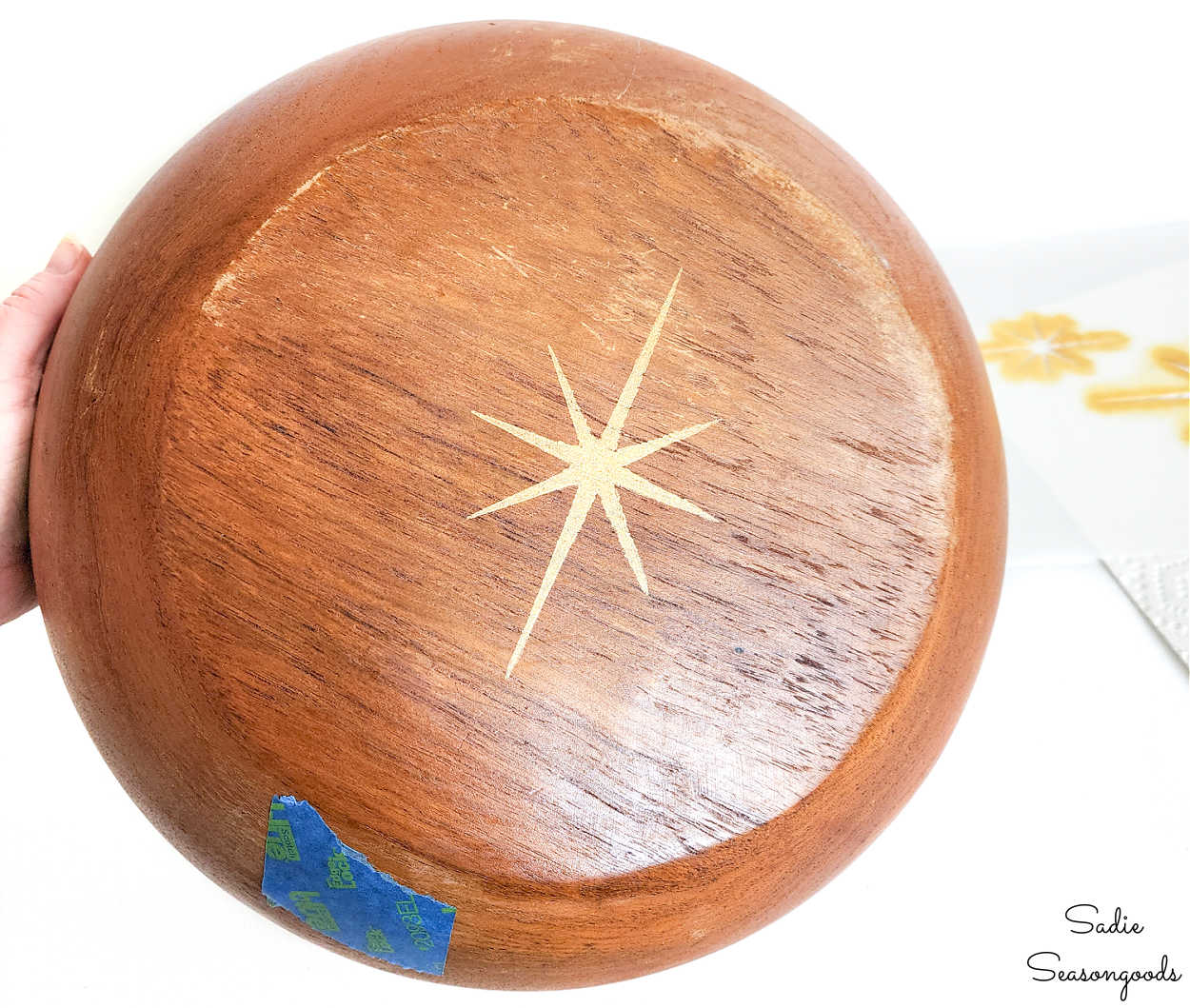
And you know what? There didn’t seem to be much of a difference at all. If anything, the conditioned side looked a smidge cleaner!
Mid Century Modern Pattern on Wood
So, I went ahead and buffed on some salve to the entire bowl, inside and out. Now the key bowl positively gleamed and much of the scuffing disappeared.
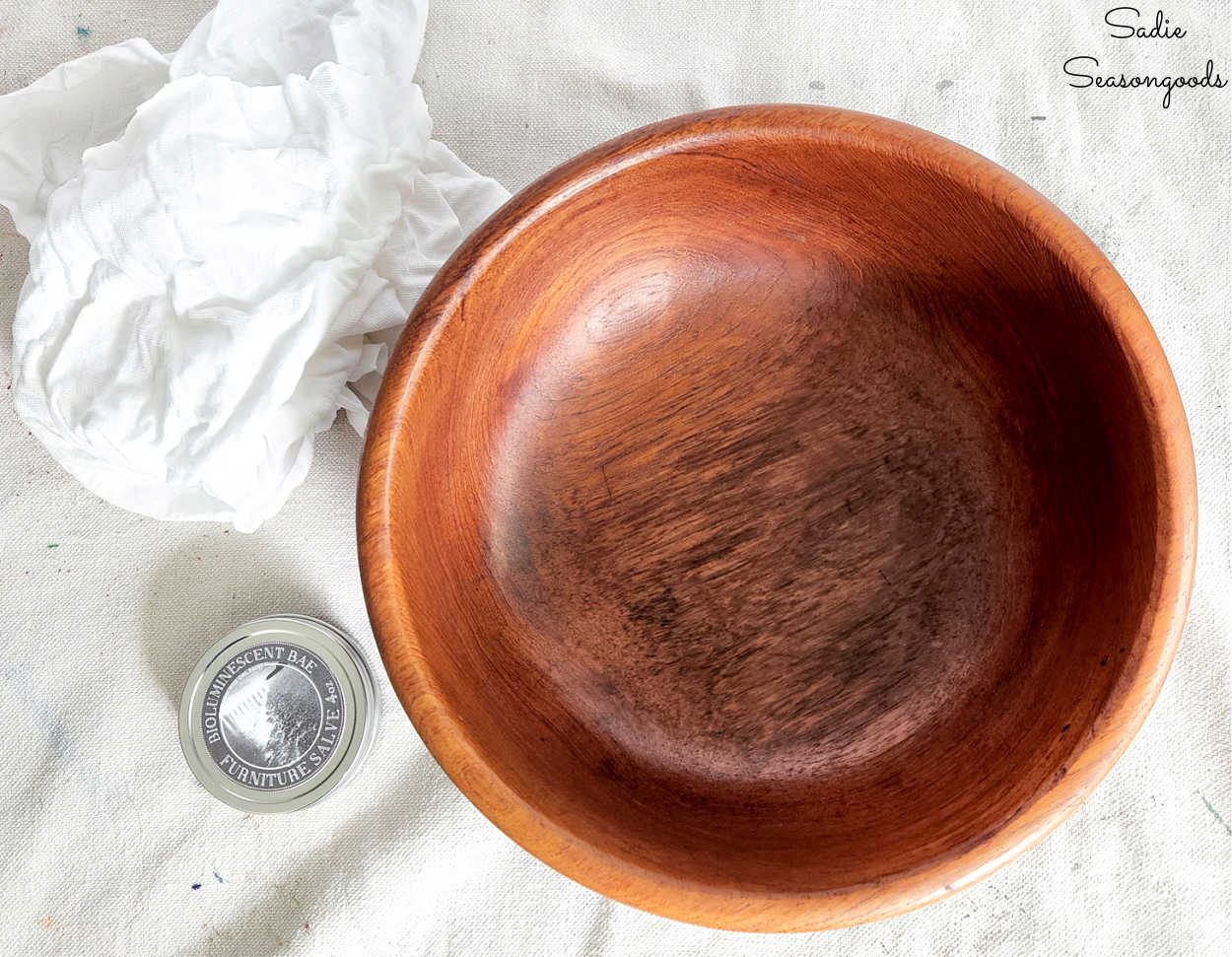
From there, I once again centered my stencil (after cutting it out from the full size stencil- otherwise, it wouldn’t have fit) and used the same gold paint to stencil the design.
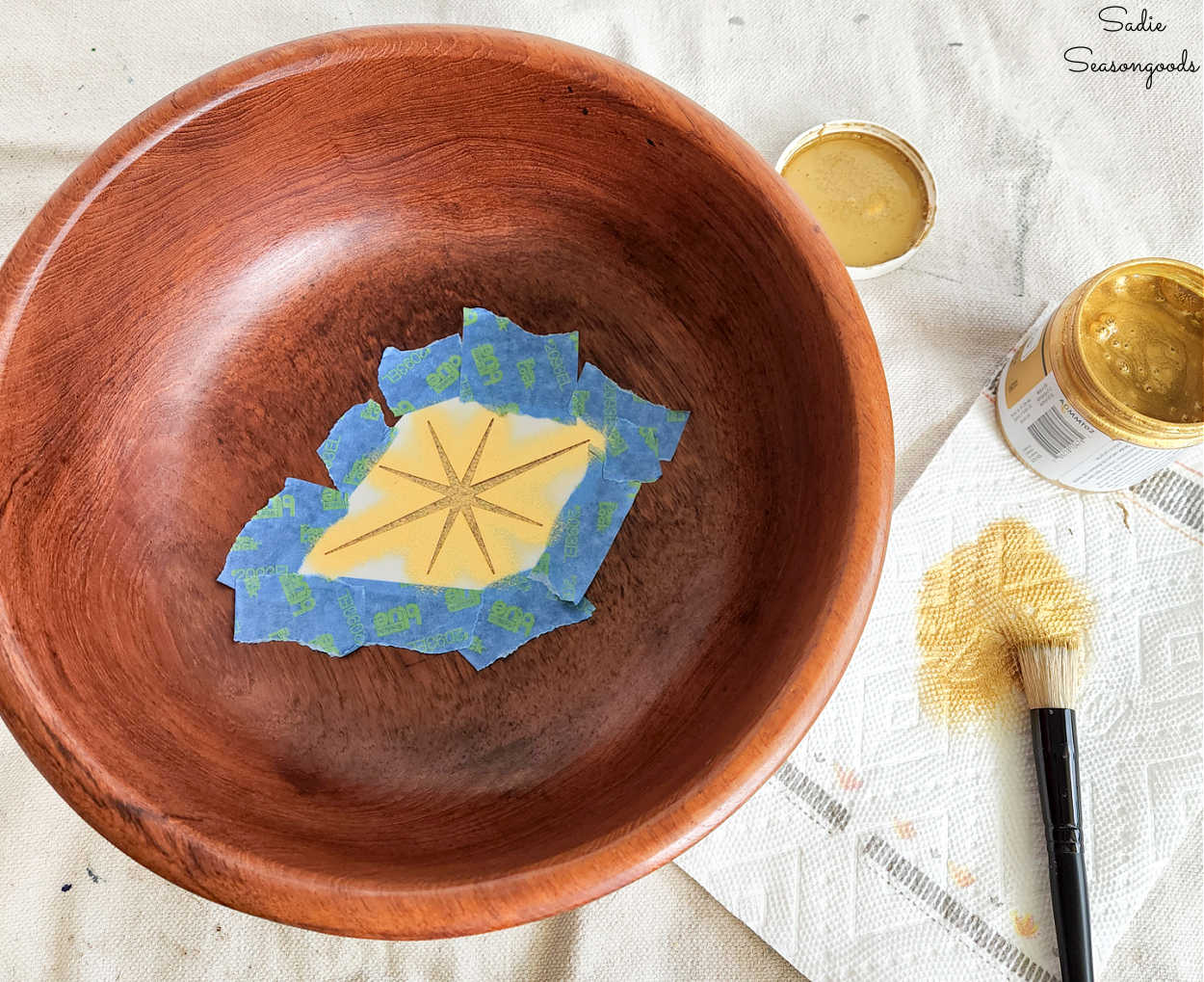
And voila, it looked perfect. I just LOVE how gold stenciling looks on unpainted wood…
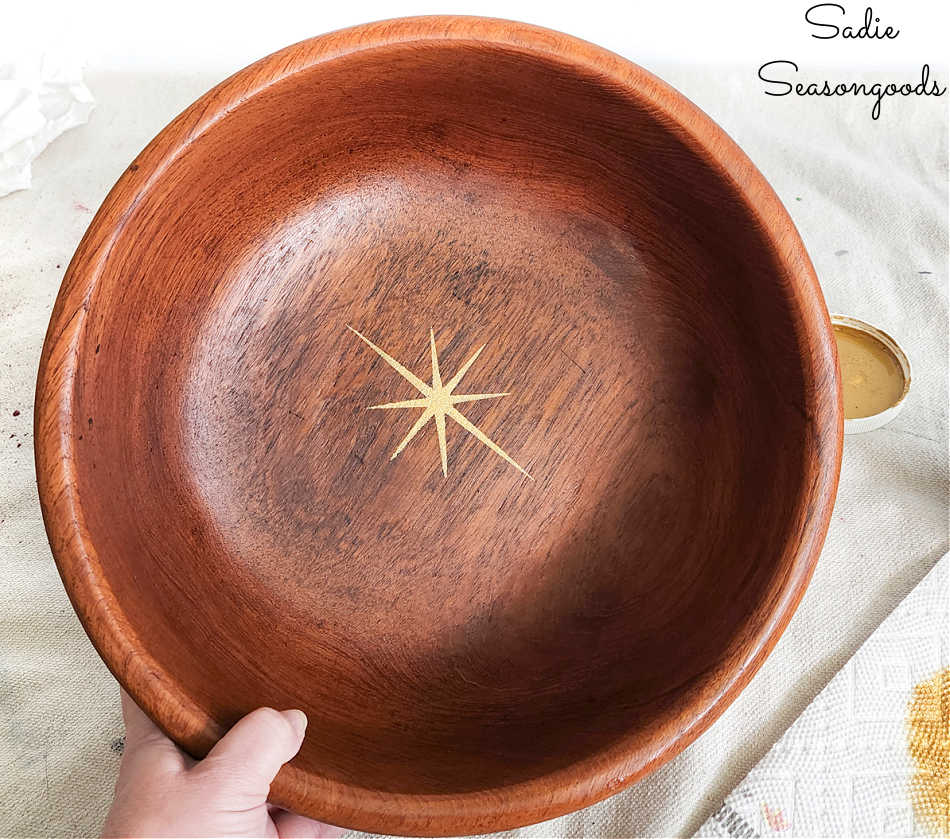
So, yeah…stenciling over the conditioned wood was a smashing success! What a pleasant surprise.
But, now- the scary part. Stenciling on the rounded sides of the key bowl. I wanted four more stars on the bowl- at about every 90°.
So, I placed the stencil and taped it in place. Wish me luck, friends- this could go terribly right OR terribly wrong…
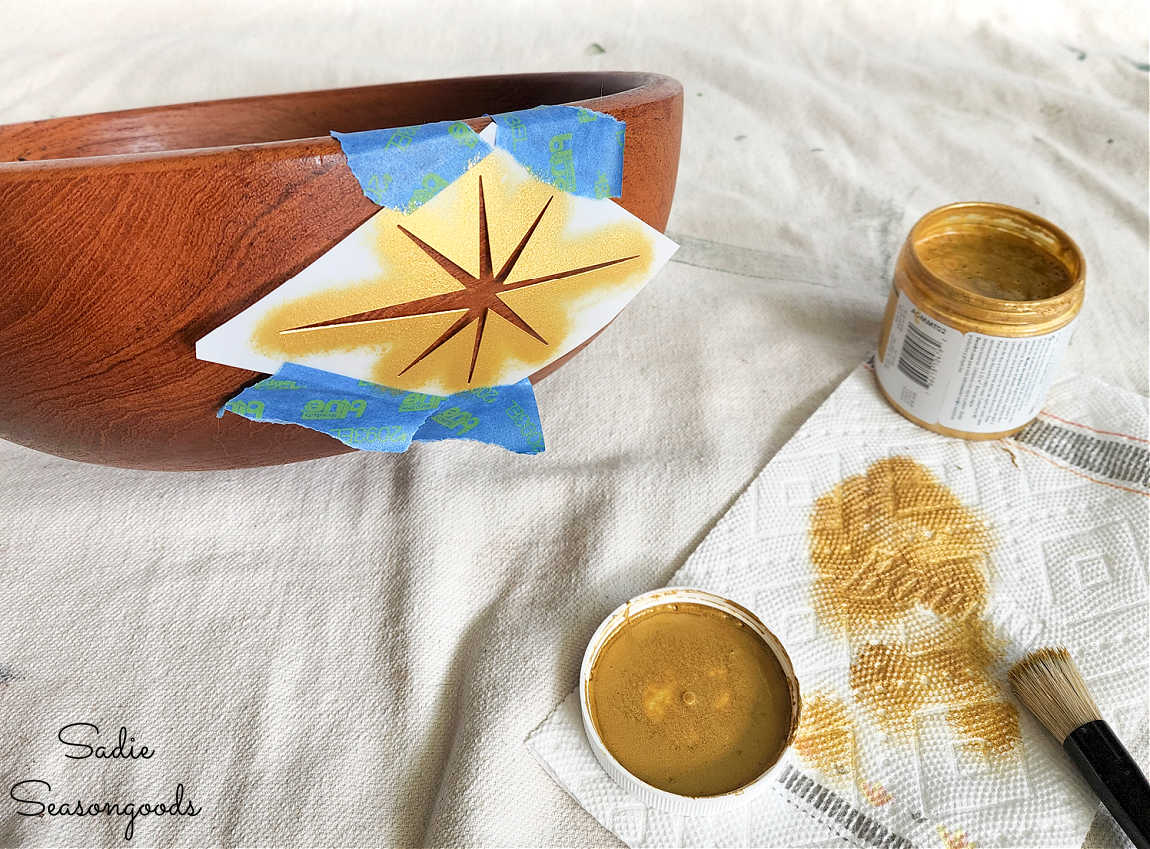
The first star came out just OK. But it was partially the bowls’ fault, as there was a slight bump in the wood that I hadn’t noticed before I started.
But the second star? DIVINE.
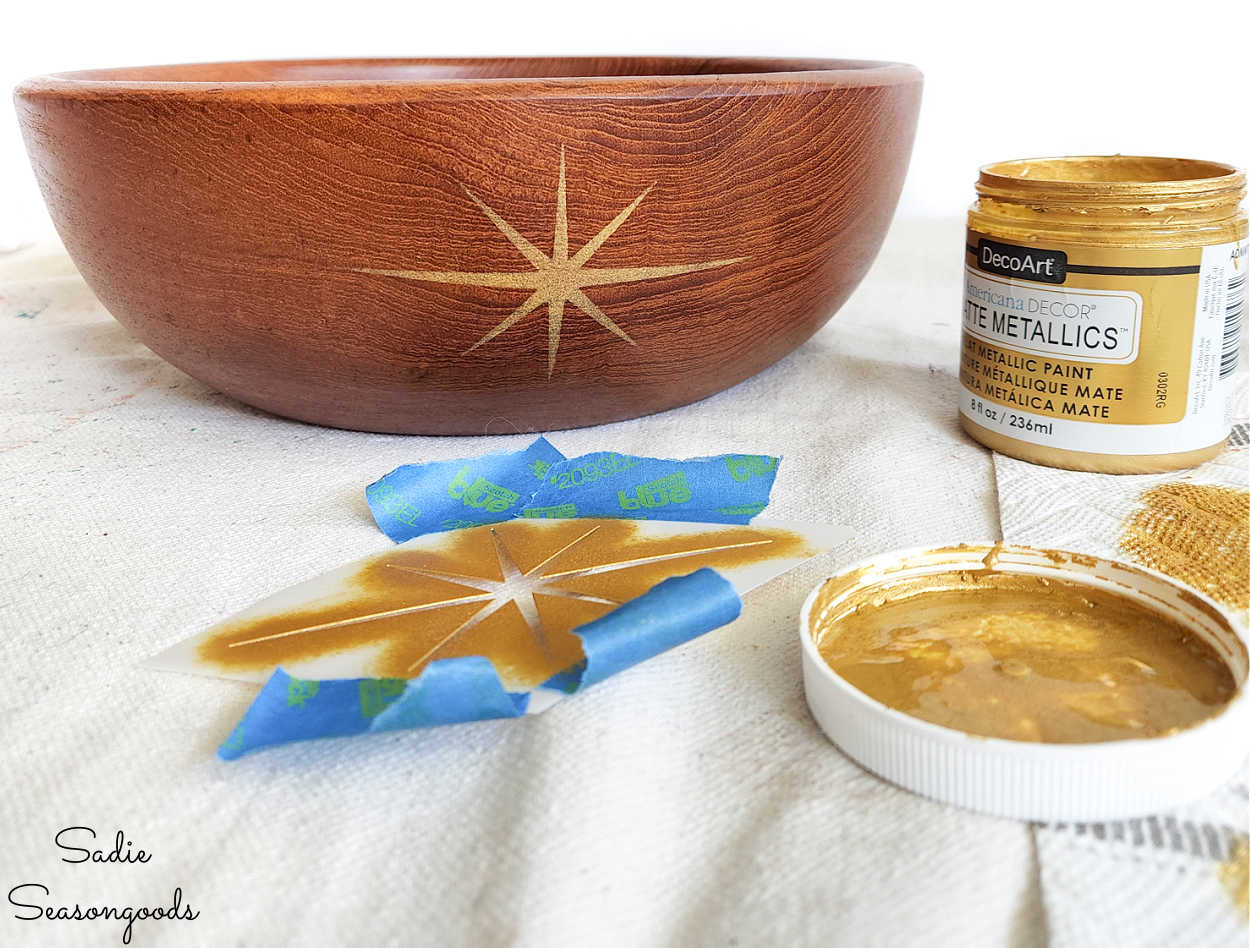
Using minimal paint, straight up-and-down stippling, and my fingers to keep the stencil from stretching or getting distorted was key. I ended up with gold fingers- but, they were easy to clean and worth it those neat and tidy stars!
Finally, after stenciling all four exterior stars, I buffed clear wax onto the key bowl. Since it’ll be a workhorse in our entryway, I wanted a nice smooth topcoat to protect it (AND my stenciling) from further damage.
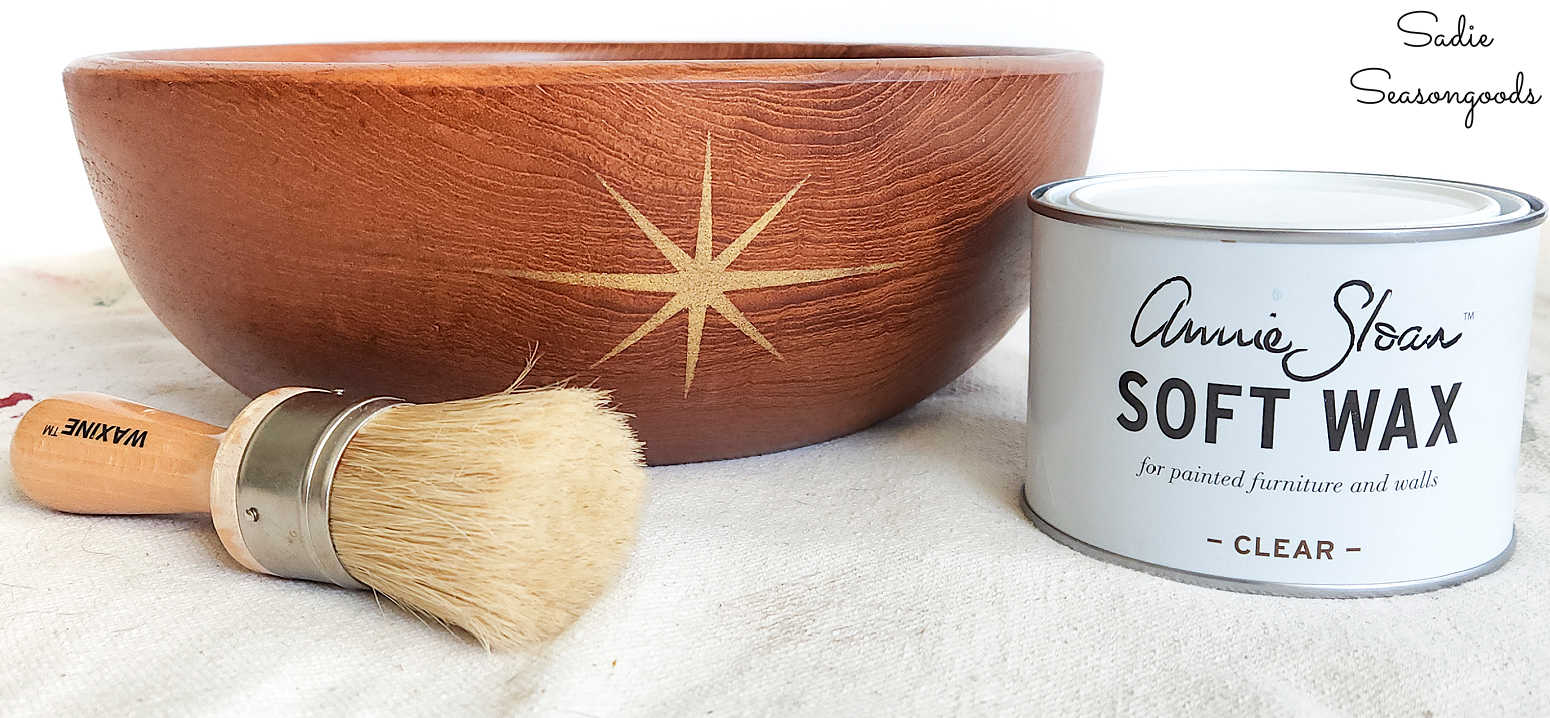
Key Bowl for the Entryway
Full disclosure, our entryway is surprisingly dark- so I couldn’t take my final photos in its actual, long-term spot. But I styled it elsewhere so you could see it in all its gorgeous glory.
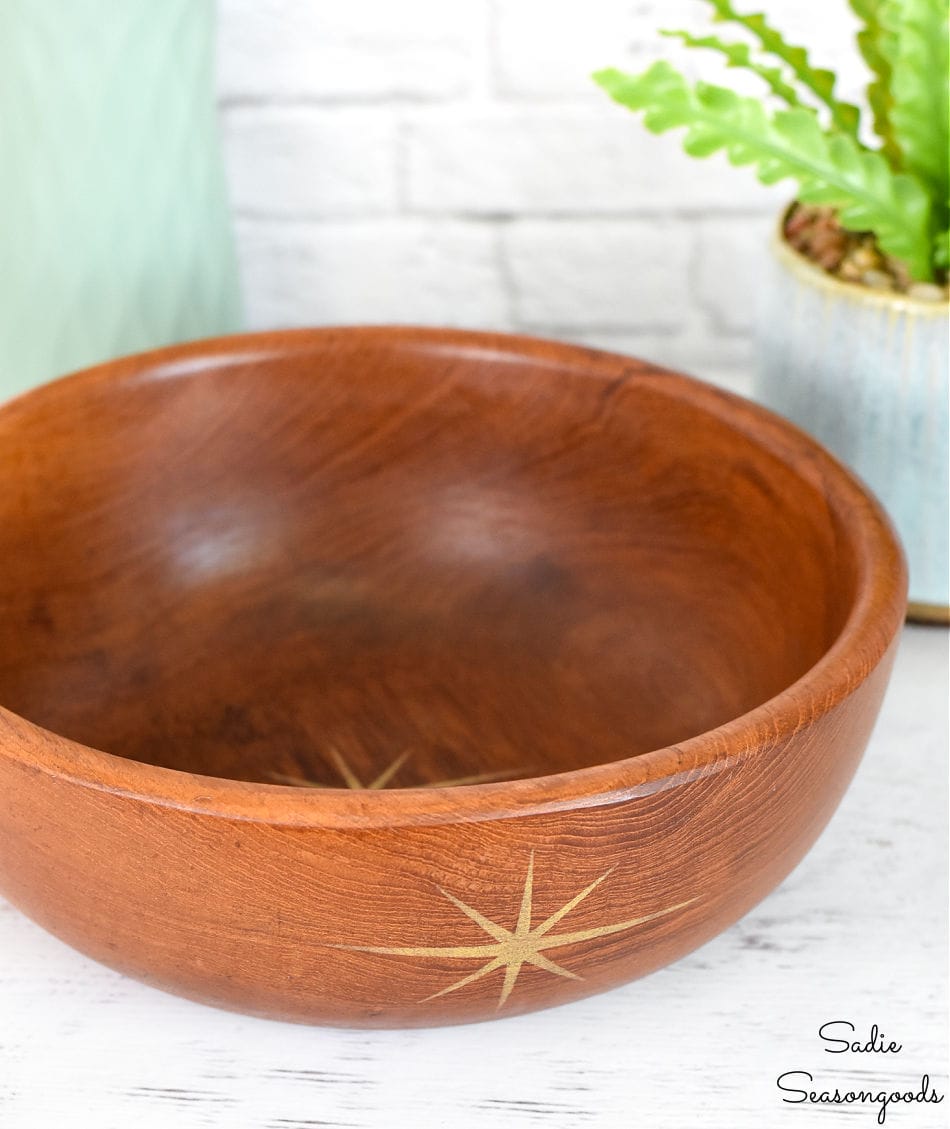
Isn’t it so lovely now? All gleaming wood, succulent grain, and a touch of gold to make it pop.
Plus, its wide openness and smooth interior will be such a breath of fresh air for my husband as he grabs his keys and wallet each morning. Not too shabby for a $3.99 thrift store purchase, eh?
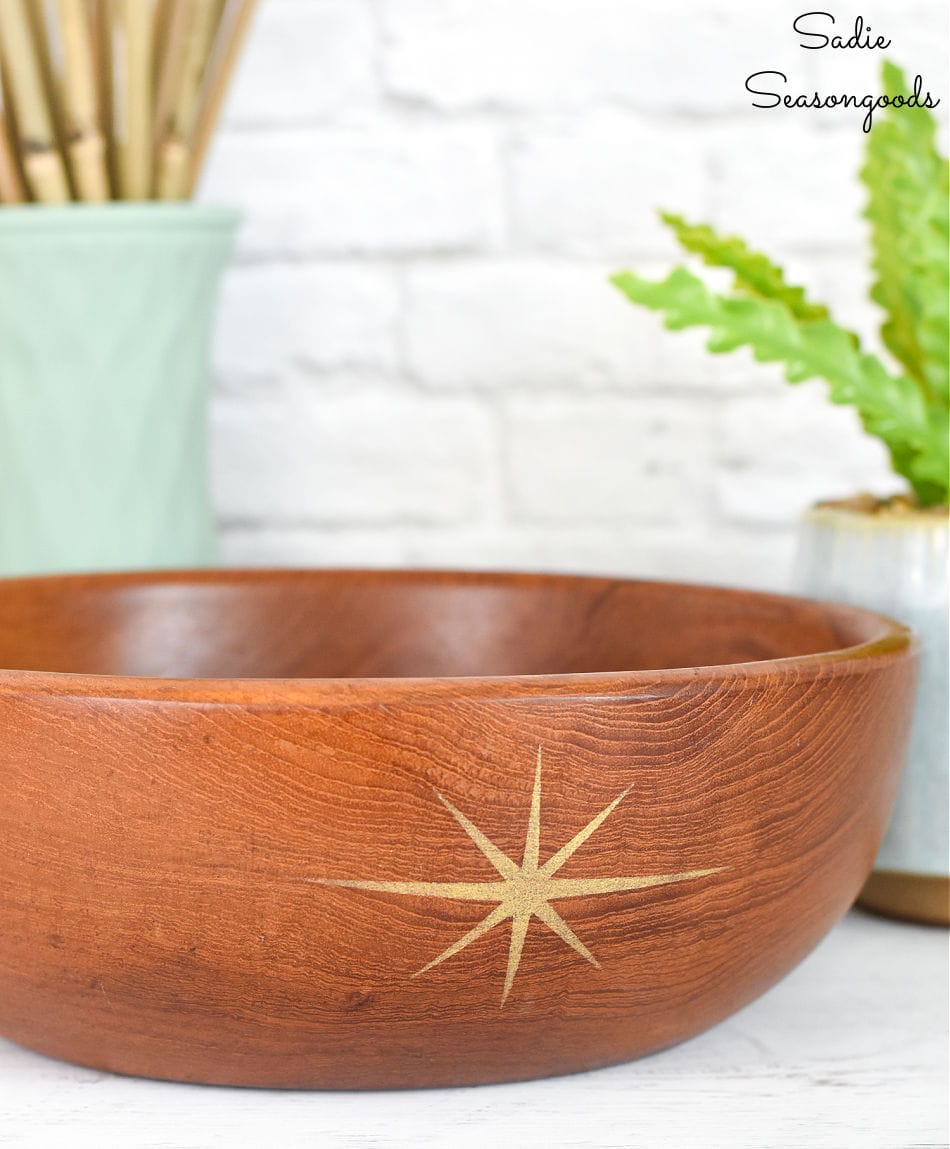
This is the second project I’ve used that furniture salve on (this being the first), and man- I am HOOKED! It really is a miracle worker on those blemished wooden pieces from the thrifts.
If you enjoyed this upcycling project for a key bowl, then you may also appreciate how I restored this ugly, stained wooden lazy Susan, as well!
Craft on!
S
Want to be notified when I publish my next upcycling project tutorial?
Join me on Social Media:
PIN ME!
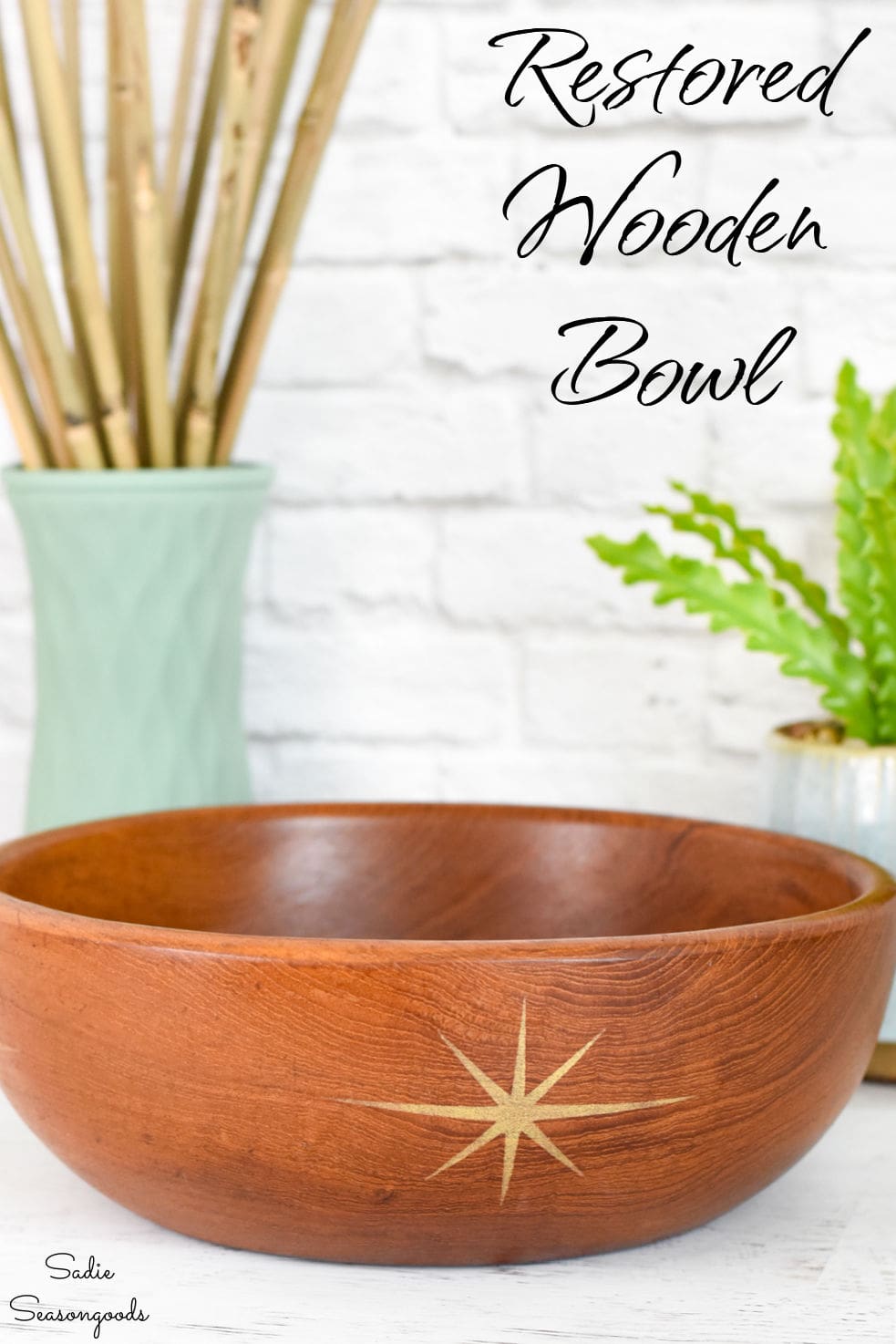
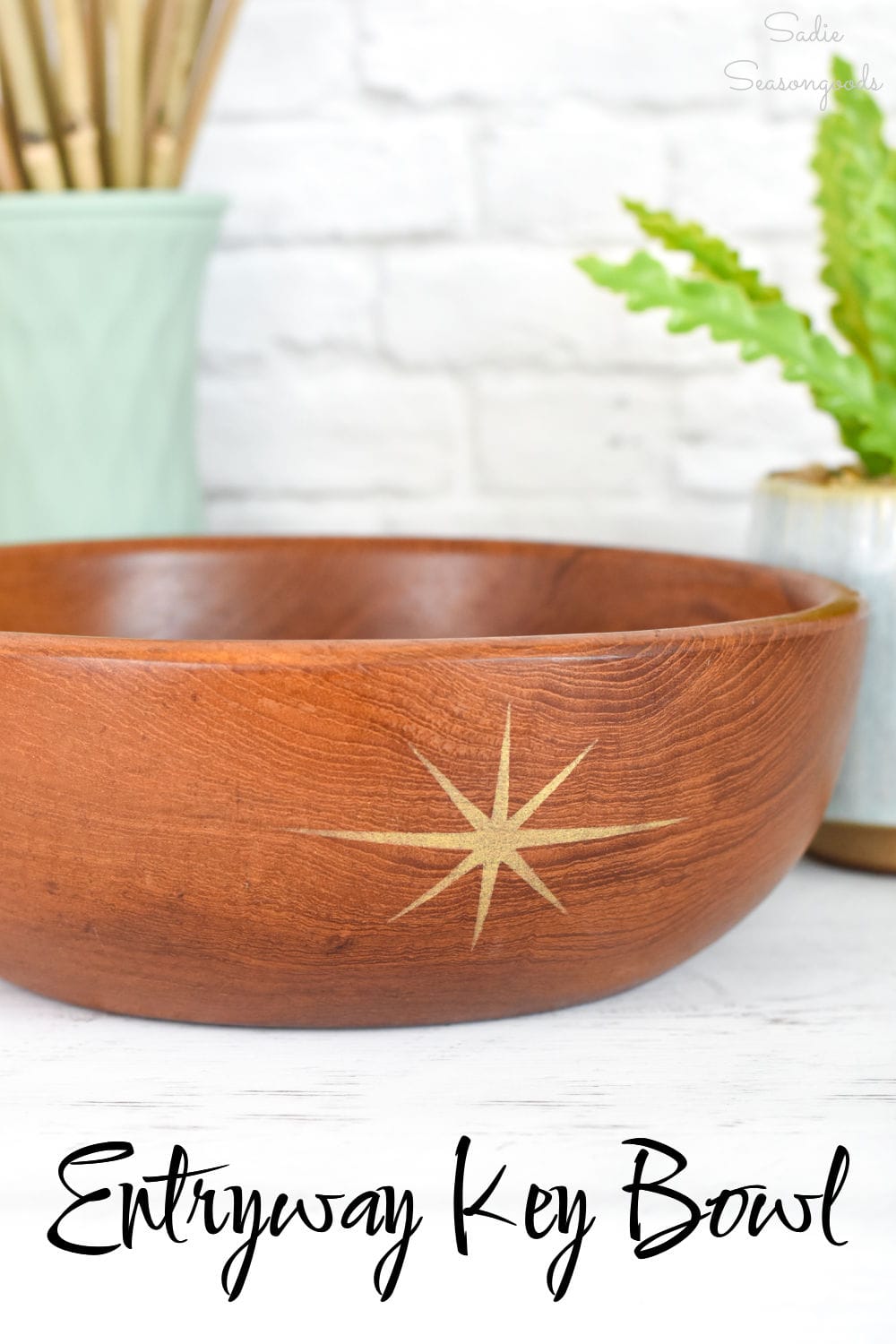
Sarah Ramberg is the owner of Sadie Seasongoods, a website that celebrates all things secondhand. From upcycling ideas and thrifted decor to vintage-centric travel itineraries, Sadie Seasongoods is a one-stop shop for anyone who loves thrifting and approachable repurposing ideas. Sarah is also the author of “Crafting with Flannel” and has been featured in numerous media outlets and magazines.
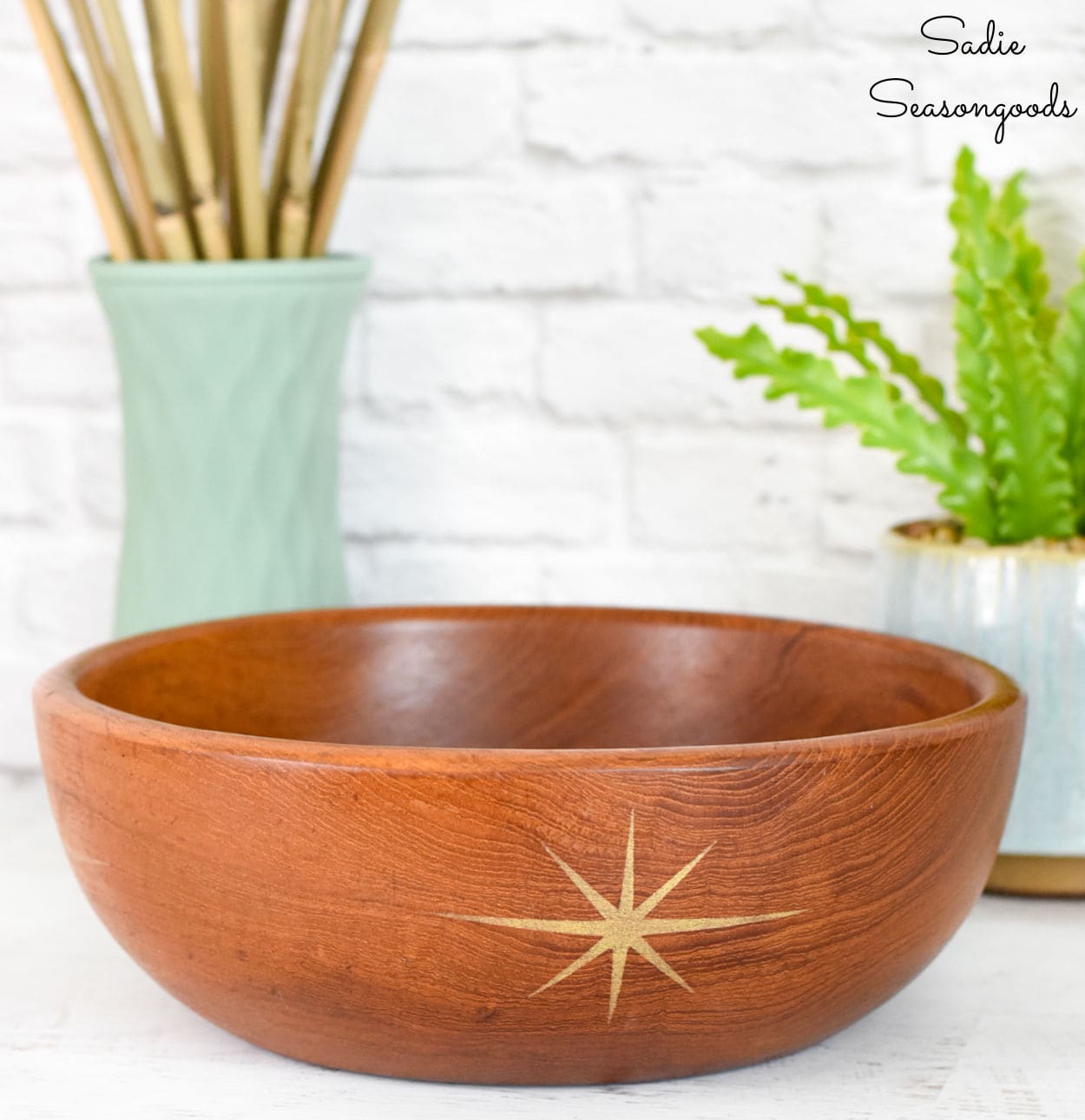

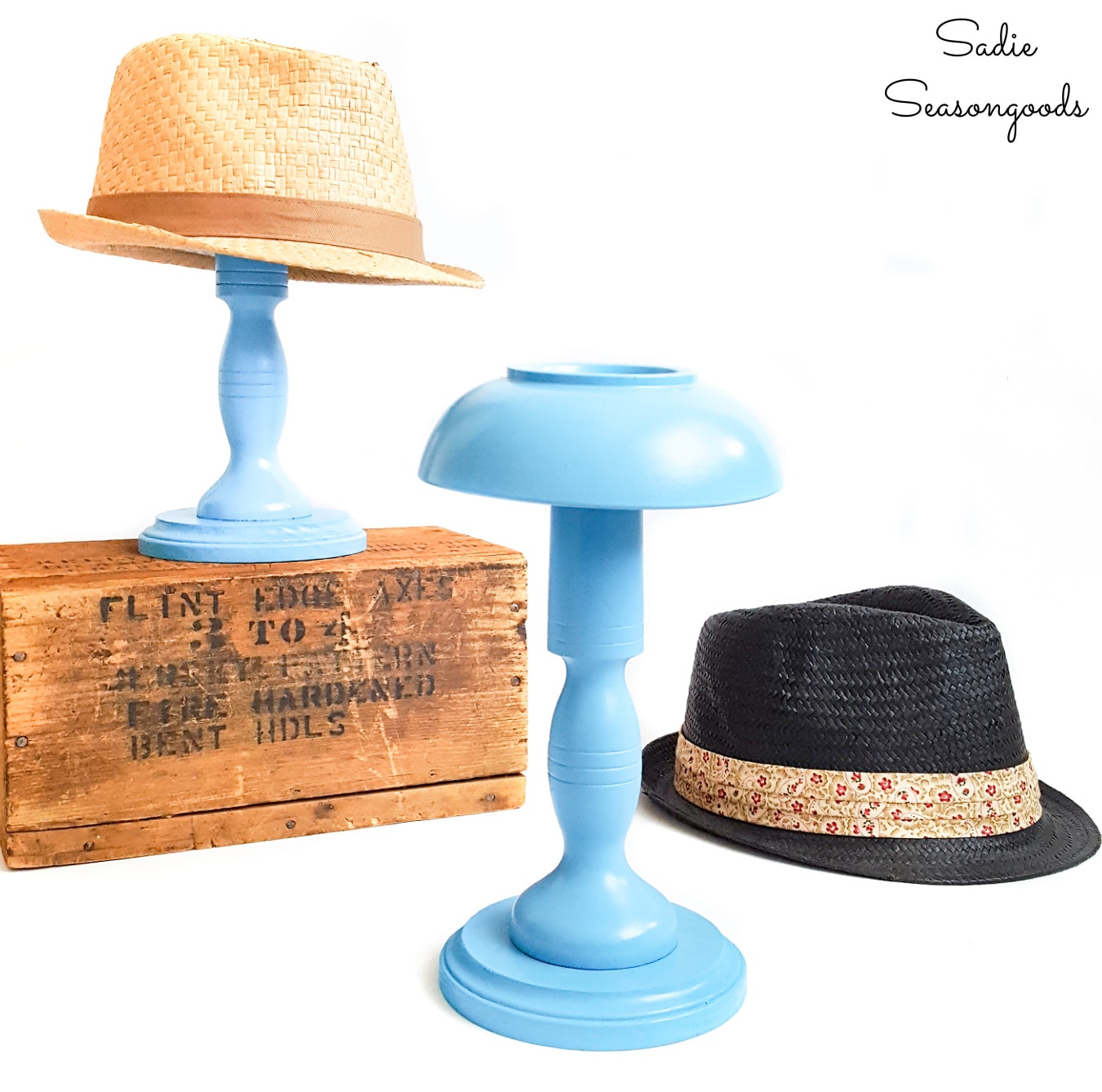
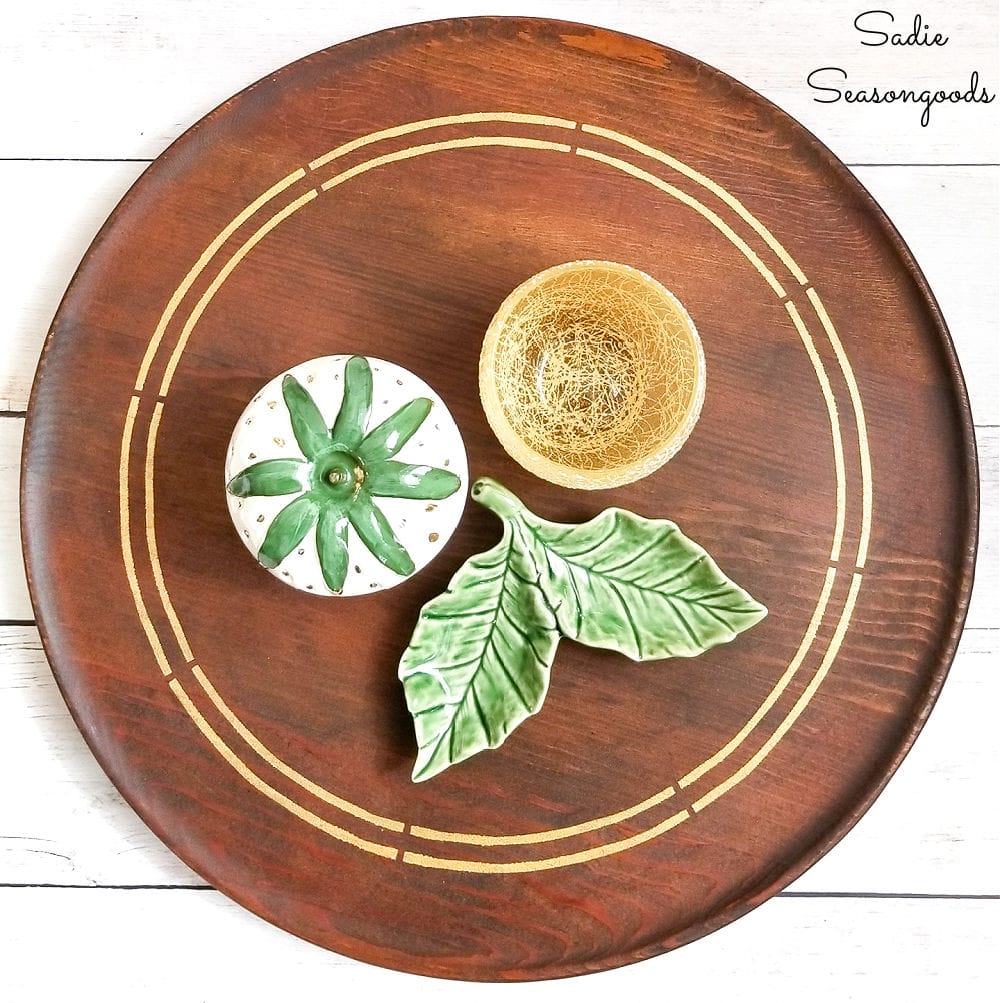



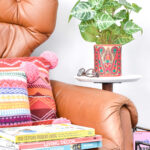
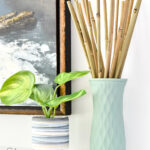
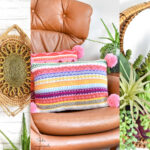
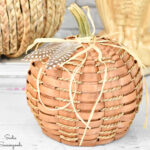
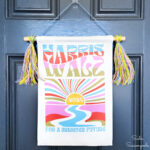




It looks beautiful, so glad it worked out perfectly. I love the natural wood with the touch of gold, looks lush.x
Thank you so much! I’m glad I’m not the only one who loves the wood/gold combo!
I have a wooden bowl to do something with. I did infect think of keys, BUT, never did it in fear of scratching, nicking, etc the bowl.
Any suggestions?
Here’s hoping the last step I took in my post does the trick! Only time will tell.
Worked out wonderfully! Love it!
Thanks, Fonda!
I love the gold against the wood; it really makes it look more MCM to me! Lovely job–and great problem solving!I have a very scratched metal tray in my front hall but haven’t found anything that I want to replace it with–yet! And it has cut out clovers–as a nod to Irish heritage.